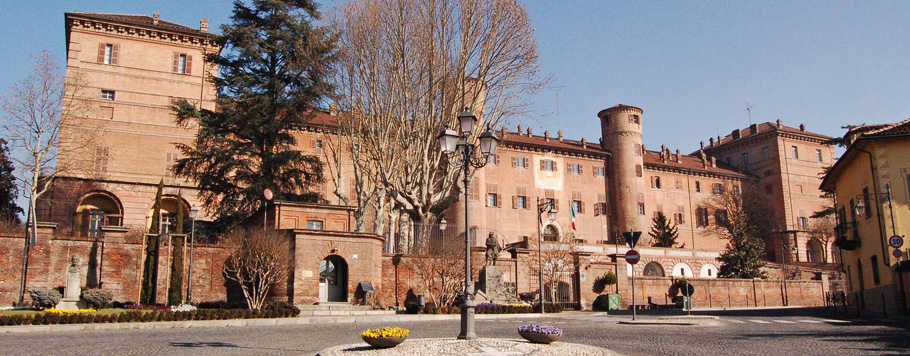 un progetto di
un progetto di 
Il Castello è stato edificato in epoca medievale e fu trasformato dai Savoia in residenza di delizie. Esso fu molto amato dalle donne di casa Savoia (la principessa MariaAdelaide, Clotilde e Letizia). Il Castello domina la città di Moncalieri dall’alto e mostra nella sua estetica le varie fasi costruttive che si sono alternate: si veda la facciata tra due torrioni barocchi con al centro torri medievali. Nel 1277 Tommaso III di Savoia fece costruire una torre e una porta merlata. Nella seconda metà del Quattrocento Jolanda di Valois ordinò la costruzione di ben quattro torrioni circolari poi inglobati nei successivi rifacimenti; le sale interne vennero arredate fastosamente per trasformare il Castello in residenza ducale. Nel 1559 la prima Madama Reale trasformò l'antica fortezza in dimora regale arricchendo altresì il parco di circa duecento alberi. Durante la dominazione francese nel 1798 il Castello fu usato anche come ospedale e come carcere. Carlo Alberto scelse questo luogo come residenza reale e venne usato con questa funzione fino al 1926, quando morì Maria Clotilde di Savoia. Attualmente il Castello è sede dei Carabinieri del Piemonte e in parte adibito a mostra permanente dedicato alla Principessa Maria Letizia che ha lo scopo di attirare pubblico in questo luogo che è patrimonio mondiale UNESCO.
The first structure was a fortress built by Thomas I of Savoy around 1100 on a hill, to command the main southern access to Turin. In the mid-15th century Yolanda of Valois, wife of Duke Amadeus IX, turned it into a pleasure residence. Architect Carlo di Castellamonte enlarged the construction substantially, and the interiors were redesigned by him and other local artists. The castle was the site of the marriage between Maria Vittoria Francesca of Savoy to the Prince of Carignano. It was also the place where Maria Carolina of Savoy married Anthony of Saxony by proxy in 1781. It was the scene of the death of Maria Antonietta of Spain in 1785; she was the wife of Victor Amadeus III of Sardinia. Victor Amadeus would later die there in 1796. The castle was used extensively by the Savoyards, and was the first castle occupied in 1798 by the French armies, who retained it until 1814. Returned to Victor Emmanuel I of Sardinia and later to his distant nephew Charles Albert of Sardinia, Prince of Carignano, it became the residence of young family princes who studied here. King Victor Emmanuel II preferred it to the Royal Palace of Turin, and had numerous apartments furnished according to his tastes. In 1849, it was from this palace that emerged the famous Proclamation of Moncalieri, written by Massimo D'Azeglio and signed by the king Vittorio Emmanuel II. The palace was later was used by the Mother Queens and royal princesses. Since 1921 it has been the home of the 1st Battalion of the Carabinieri, but the historical rooms can be freely visited. On April 5, 2008, a fire broke out in the castle, damaging one of the towers and the hall of the proclaim.
Contatti
Castello Reale di Moncalieri
via Cavour, 46
10024 Moncalieri (TO)
Informazioni generali
E-mail: segreteria@lacittaelarte.it
Web: castellodimoncalieri.it